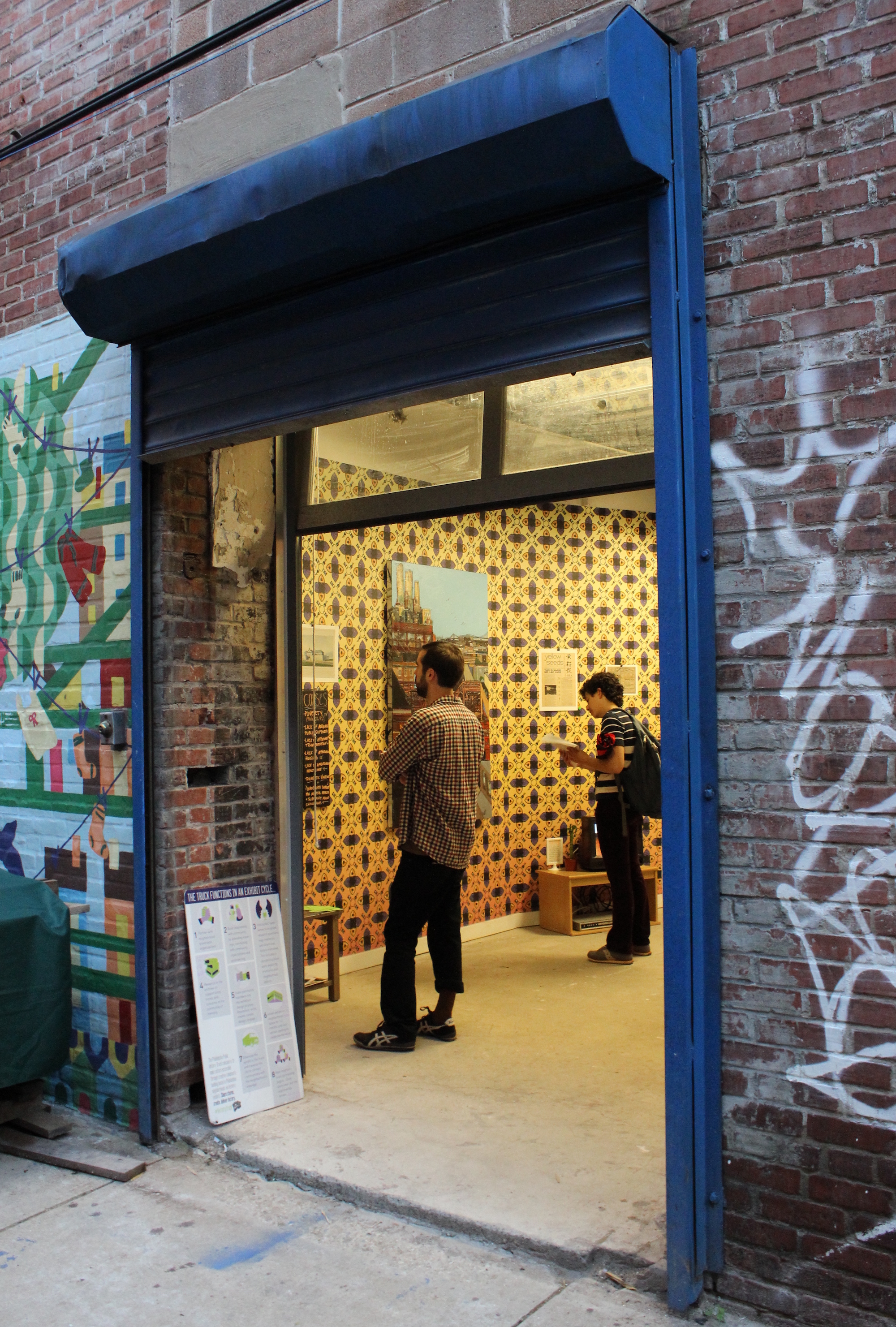
Philly’s Houseless Museum spotlights our unsheltered neighbors and the many meanings of home
Above: Photo of Tenderloin Flophouse from the Historical Society of Philadelphia, along with a survey of formerly or currently unhoused visitors. Photos by Chip Schwartz.
History has frequently been skewed toward those who recorded it. Whether facts were purposely changed to favor those in power, or the writing merely focused on what the authors were familiar with, the challenge for present-day historians is to piece together these accounts and dredge up further information in order to gain a clear picture of the past. Erin Bernard’s Philadelphia Public History Truck has set up “A Houseless Museum” at Knight grantee Asian Arts Initiative’s Pearl Street Project space this month in order to examine the past and present of one of society’s most marginalized groups: those without houses.
Pearl Street Project’s gallery, location behind Asian Arts Initiative’s main space, is an ideal setting for such a discussion to take place. Situated just north of Vine Street and the expressway that bisects the city, the area around Pearl Street was once an industrial expanse crisscrossed by train bridges and dotted with bars and brothels. Many people did–and still do–sleep on the streets around this area, and a prison at Broad and Arch Streets once incarcerated many of these unhoused members of the community.
These days, the prison is a thing of the past, and the nearby Sunday Breakfast Rescue Mission has taken to feeding and caring for its neighbors instead. In fact, the wallpaper behind Bernard’s exhibit was left in place from a previous show, and was designed by local houseless individuals from the Sunday Breakfast Rescue Mission in collaboration with Emily Chow Bluck and Aletheia Hyun-Jin Shin, along with Rick Lowe of Project Row Houses.

A view into “A Houseless Museum” from Pearl Street.
Passing under the garage door that slides up to allow access from Pearl Street to the History Truck’s exhibit, visitors are met with a variety of media on display. There are historical photographs of the neighborhood, as well as a painted rendition of Chinatown North by artist Leroy Johnson, a series of text pieces that examine the history of the unhoused in Philadelphia, and a television playing the documentary “Save Chinatown.” Throughout the show there are also interactive pieces, such as one that asks whether visitors have ever lived without a house themselves. Participants are asked to write or draw responses in order to share their experiences.
The interaction doesn’t end there, though. Bernard also includes a mirrored medicine cabinet complete with free waterless shampoo, deodorant, clean socks, mouthwash and other materials for those who need them. A couple of collaborative works made with University of the Arts students aim to share their impressions of home by way of following their senses. In order to understand different ways of perceiving home, they encourage visitors to share the sounds, smells, sights, tastes and feelings of home including family recipes, flags and other personal items.
Bernard traces the history of unhoused communities to colonial times when displaced Lenape Native Americans began to lose their geographical home to European settlers, through the activism of Chinese Americans who fought to keep their community whole and their identity alive, up until the present day. Charities, missions and community organizations have done much to overcome the criminalization and disparagement of unsheltered people, but the challenges of houseless life and the many causes which lead to it remain sharply rooted in contemporary cities.
When home means more than just a building to live in, we may learn to better relate to those around us with no place to return to at the end of the day, and in turn, those without houses may begin to construct a sense of home in a multitude of other ways. It is possible to find a home anywhere, but it requires a community willing to lend a hand. Visit “A Houseless Museum” at Asian Arts Initiative’s Pearl Street space through June 24.
Recent Content
-
Artsarticle ·
-
Artsarticle ·
-
Artsarticle ·
